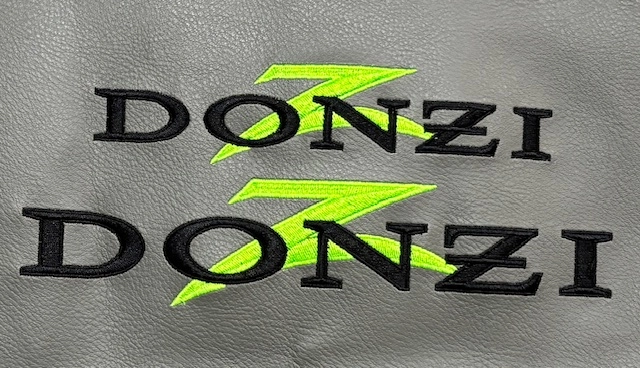The Art of Custom-made Embroidery: Opening the Keys to Creating Special and Unforgettable Designs
Embroidery, a craft steeped in practice and creativity, holds within its detailed stitches the power to change textile into a canvas of unique expression. The secrets to producing custom embroidery layouts that astound the eye and leave an enduring impact depend on a fragile balance of method, creative thinking, and attention to information. As we explore the globe of custom-made embroidery, we reveal the nuanced interplay in between thread option, stitch intricacy, and design personalization that elevates a mere garment to an artwork. Join us on a trip via the art of custom needlework as we unwind the mysteries behind crafting absolutely memorable and distinct creations.
Selecting the Right Embroidery Threads
When picking embroidery threads, what vital variables should you take into consideration to ensure the finest outcomes for your customized designs? The option of embroidery string is important in identifying the final end result of your embroidered style.
Furthermore, the weight or density of the thread plays a considerable function in the look of the embroidery. Thicker threads can include measurement and texture to your style, while finer threads are optimal for elaborate details and small text. Additionally, taking into consideration the shade fastness and washability of the thread is critical to guarantee that your customized designs keep their top quality and vibrancy in time. By meticulously examining these factors and picking premium threads that meet your specific needs, you can improve the aesthetic appeal and longevity of your stitched creations.
Exploring Various Stitch Strategies
To dive into the realm of 'Exploring Various Stitch Methods', one should comprehend the complexities and subtleties that each sewing method gives the art of embroidery. Different stitch strategies not just include visual interest but additionally add to the overall texture and measurement of the design. One popular stitch method is the satin stitch, which involves carefully stuffed parallel stitches to develop a smooth and glossy surface, perfect for filling out forms and creating bold details.
On the various other hand, the backstitch is a functional technique usually made use of for laying out and including great information. It entails sewing backwards to create a strong line of needlework. Furthermore, the French knot stitch adds a responsive component to layouts, best for developing distinctive accents like flower facilities or ornamental touches.
Checking out different stitch techniques permits embroiderers to have fun with light, shadow, and deepness within their layouts, raising the visual allure and imaginative quality of their embroidery tasks. By mastering various sewing techniques, one can unlock endless opportunities for producing one-of-a-kind and unforgettable custom needlework pieces.
Incorporating Personalized Style Elements
Having checked out the intricacies of different stitch methods such as the satin stitch, backstitch, and French knot, the emphasis currently shifts towards integrating tailored design elements in custom-made needlework tasks. Personalized design aspects play a vital duty in making embroidery projects really special and remarkable.
An additional means to incorporate personalized layout components is by including signs or motifs that hold special significance to the recipient or show their click to find out more passions and individuality. For instance, including a favorite blossom, pet, or hobby-related icon can make the needlework layout extra meaningful and personalized. In addition, selecting colors that resonate with the recipient or align with the intended theme can further improve the customization of the embroidery project.
Mastering the Art of Shade Control

One trick element of color sychronisation is understanding color concept. This includes recognizing just how various colors connect with each various other, the feelings they share, and exactly how they can be incorporated to produce visually attractive designs. By using color concept concepts, embroiderers can produce unified color palettes that enhance the overall appearance of the style.
Additionally, taking notice of comparison is essential in color coordination. Using contrasting colors can help certain elements of the design pop, improve legibility, and produce a visually vibrant embroidery piece. By understanding the art of color control, embroiderers can raise their layouts and produce remarkable pieces that reverberate with clients and customers alike.
Enhancing Texture With Advanced Embroidery Stitches
French knots, for instance, are ideal for adding small, raised dots to your design, mimicking the look of beads or developing a distinctive surface area. Bullion knots, on the various other hand, can be utilized to produce twisted, ropelike aspects that add an elegant feel to the embroidery. more information Seed sewing entails small, scattered stitches that can fill up in areas with a speckled appearance, while turkey work develops cosy, dimensional accents evocative pet hair or vegetation. Trying out with these innovative needlework stitches allows you to push the limits of typical embroidery and produce absolutely distinct and visually enticing appearances in your styles.
Final Thought
Finally, the art of personalized needlework involves a mix of selecting the right strings, exploring numerous stitch methods, including individualized design components, grasping shade sychronisation, and boosting structure with innovative stitches. By recognizing and carrying out these essential components, embroiderers can produce special and memorable styles that showcase their creativity and ability. Needlework enthusiasts can open the secrets to producing gorgeous and custom pieces that stick out and leave a long-term perception.
Comments on “Heat Transfer on T-Shirts and Aprons - Custom-made Styles and Logos”